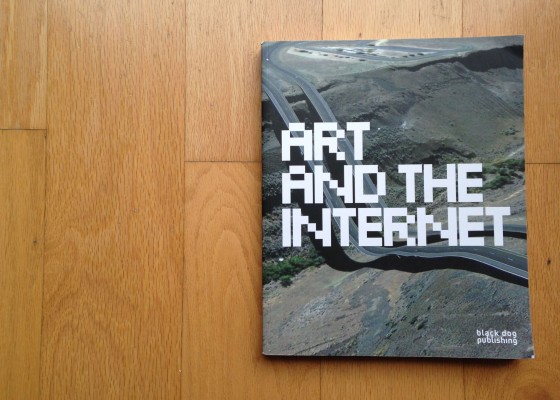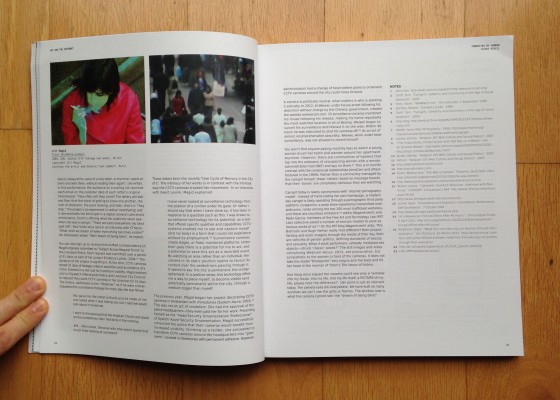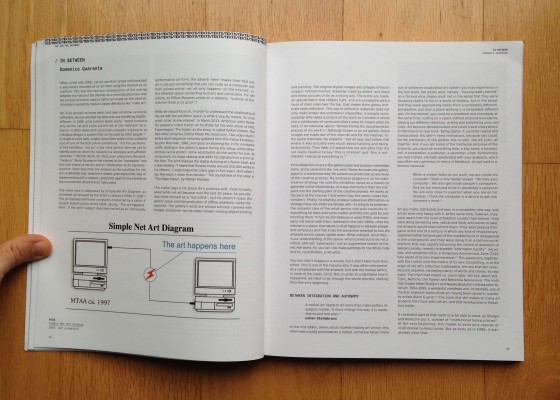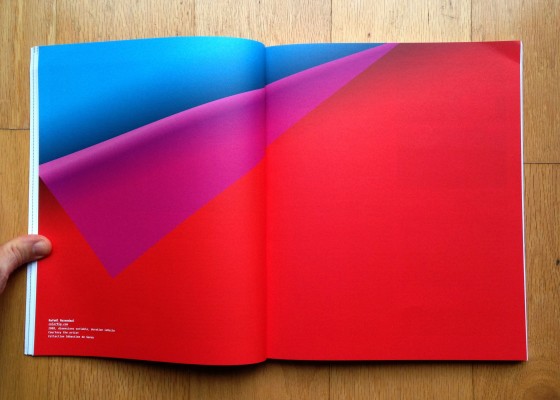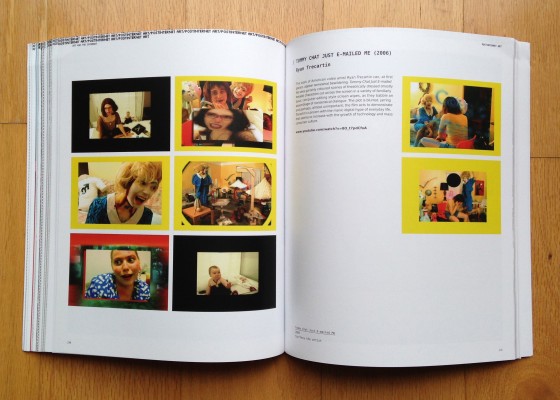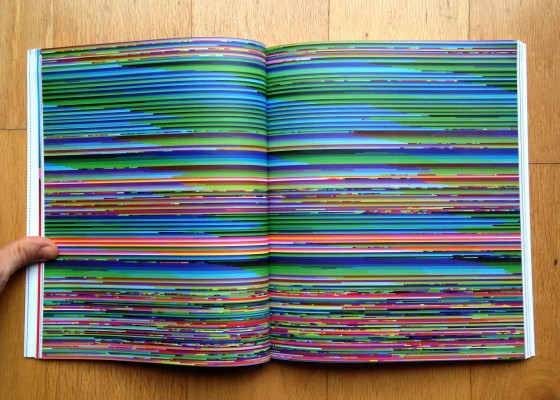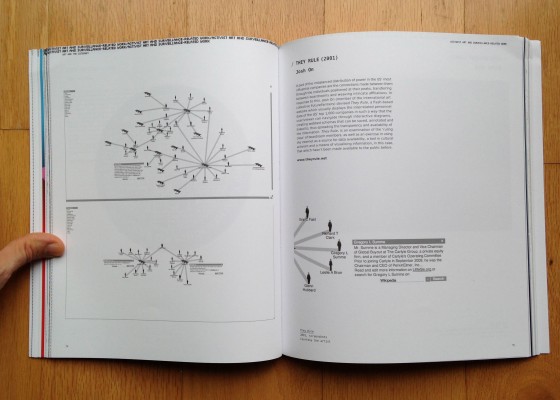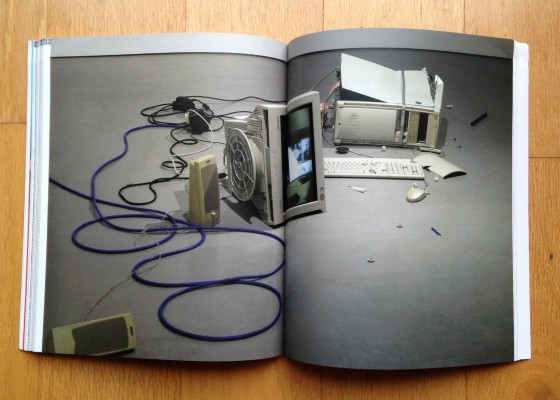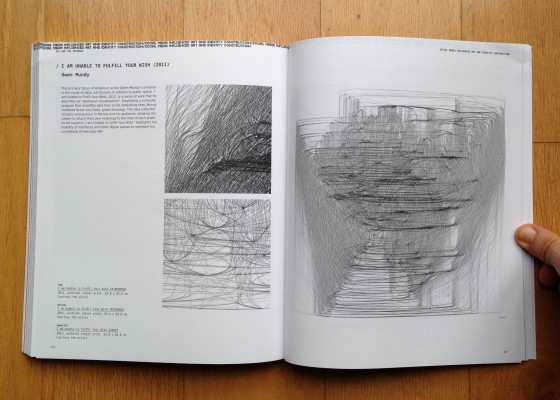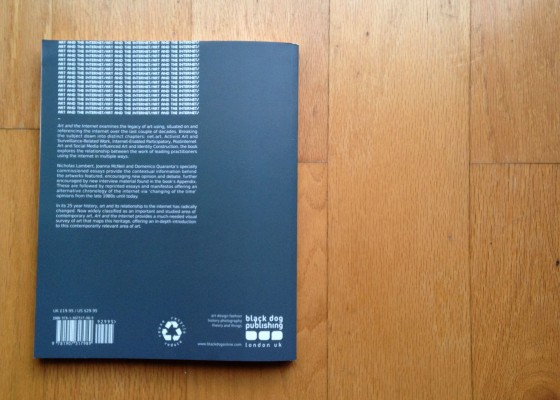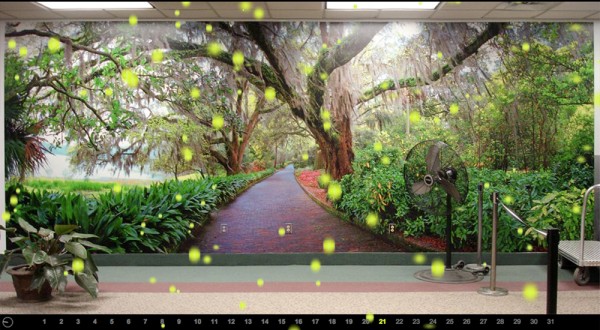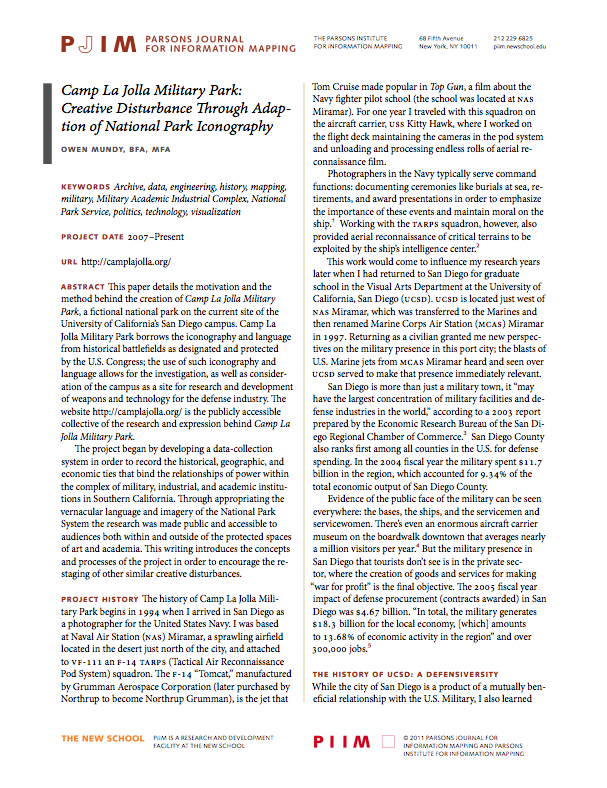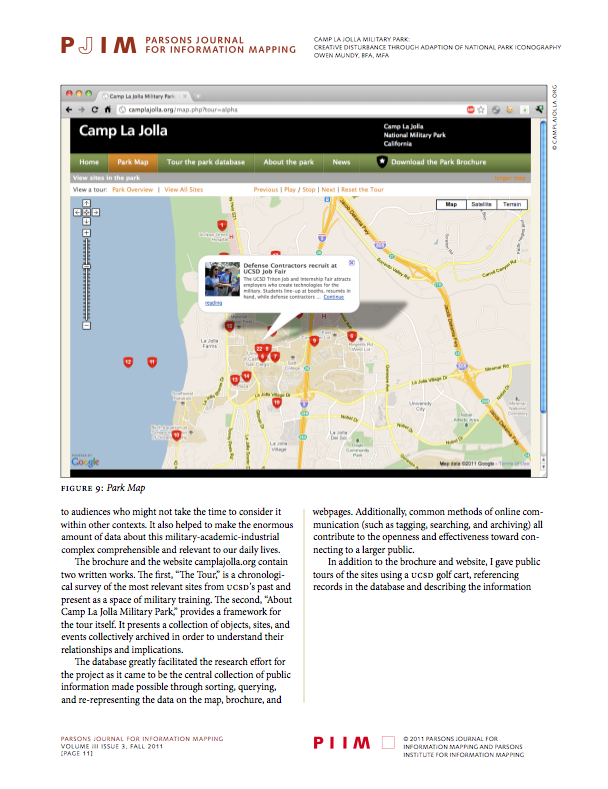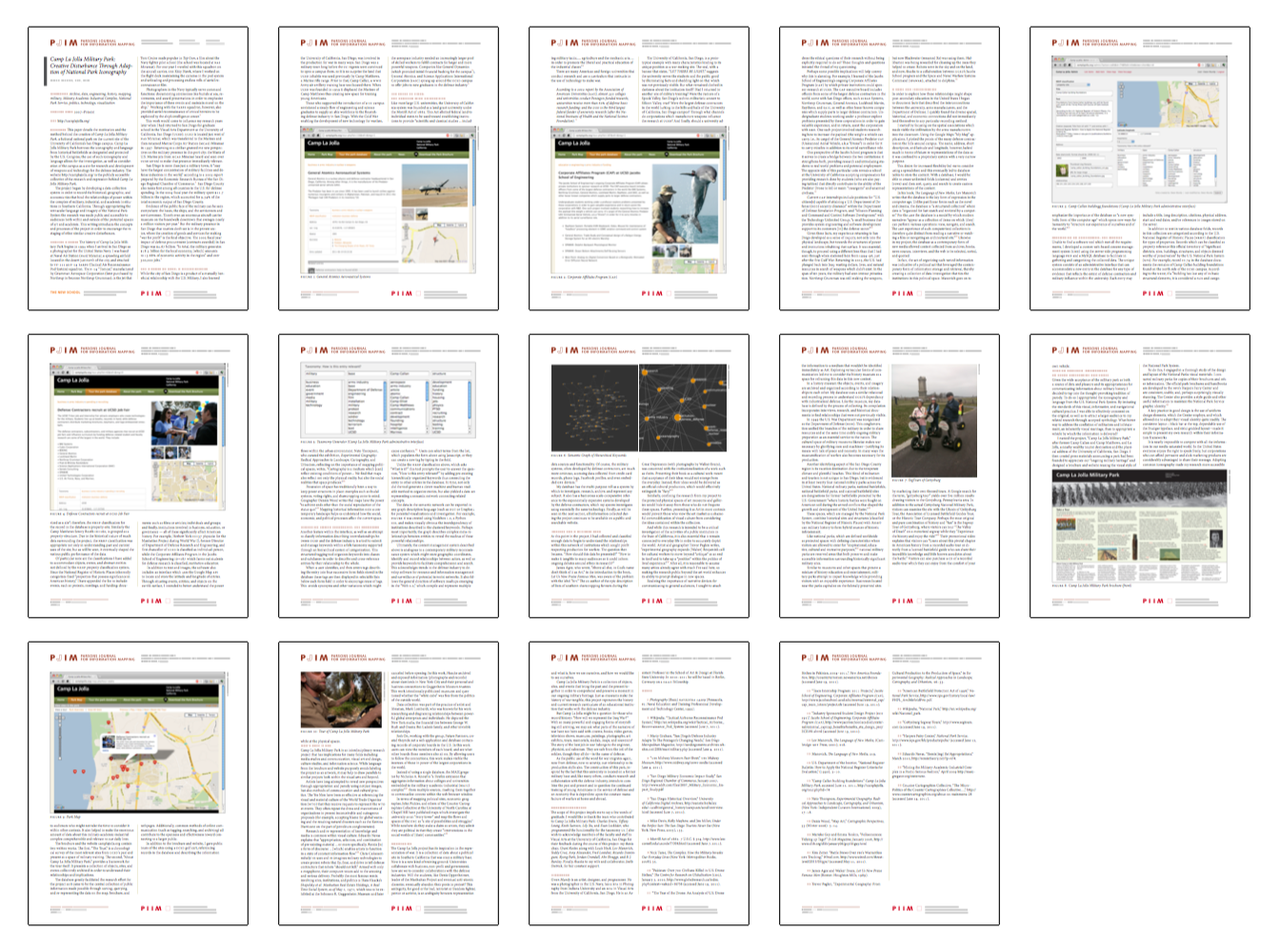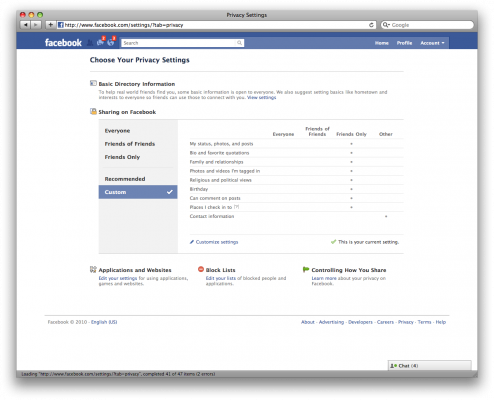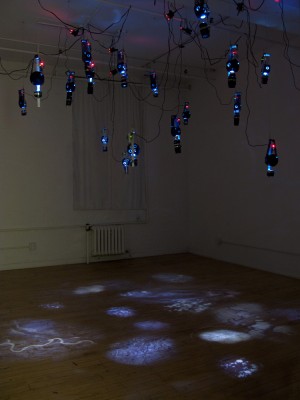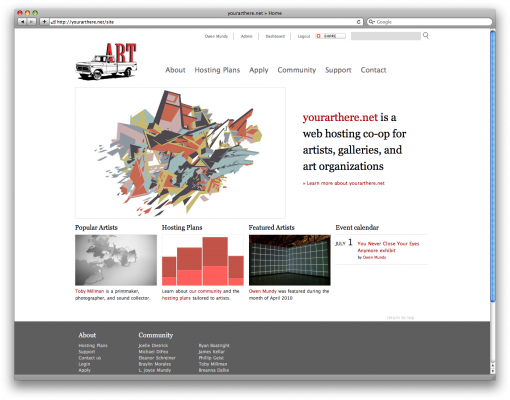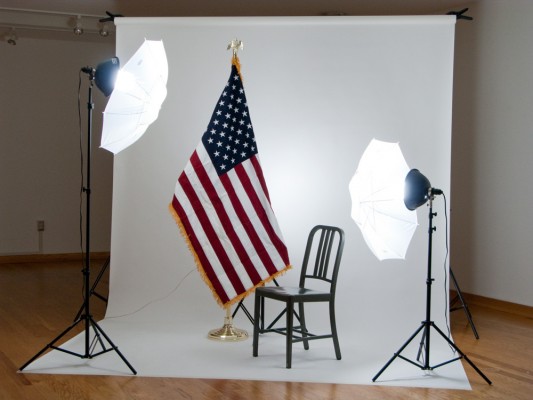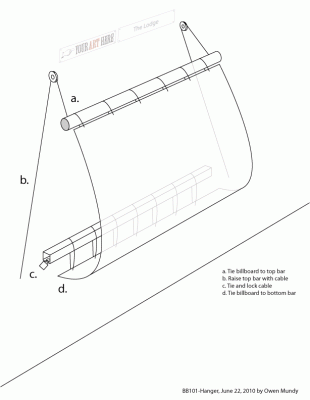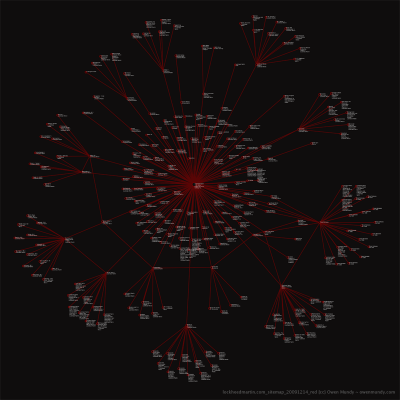Originally published in Plutonian Striptease, a series of interviews with with experts, owners, users, fans and haters of social media, to map the different views on this topic, outside the existing discussions surrounding privacy.
PS: Social networks are often in the news, why do you think this is?
OM: Assuming “social networks” refers to the online software, application programming interfaces (APIs), and the data that constitutes sites like MySpace, Facebook, and Twitter, I feel its popular to discuss them in the news for many reasons.
Online applications that enable enhanced connectivity for individuals and other entities are relatively new and there is an apparent potential for wealth through their creation and the connections they enable. News organizations are businesses, so they naturally follow the money, “reporting” on topics which are considered worthwhile to advertisers who buy space in their pages, pop-ups, and commercial breaks.
Additionally, the public is still grappling with the ability for online software to collect and distribute data about them, both with their permission and through clandestine means at once. Most users of social networking software don’t understand the methods or potential for behavior manipulation in these user interfaces and therefore are wary of what they share. Other users seem to be more care-free, making many private details from their lives public.
Finally, online social networking software is still evolving, so it’s difficult for users to establish a consensus about best practices. I believe the accelerating functionality of web 2.0 software will continue to complicate how we feel about online social networks for much longer.
PS: In what way do they differ from older forms of communication on the Internet?
OM: If web1.0 consisted of static pages, web2.0 is made-up of dynamic information, generated by the millions of users accessing the web through personal computers and mobile devices. This rapid rise in user-generated content has been made possible by the development of online applications using a myriad of open source programming languages. Sites like youtube.com (launched 2005 and written primarily in Python) and Facebook.com (2004, PHP) which consist entirely of content contributed by users, store information in databases allowing for fast searching, sorting, and re-representation. Initially, the web consisted of information and we had to sift through it manually. Web2.0 allows for the growth of a semantic web and possibilities for machines to help us describe, understand, and share exponential amounts of data through tags, feeds, and social networks.
PS: Who is ultimately responsible for what happens to the data you upload to social networks?
OM: Obviously users are responsible for deciding what information they publish online. Still, Facebook’s “Recommended Privacy Settings” should emphasize more not less. While their privacy settings always seem to be a work in progress. One thing they do consistently is default to less privacy overall, thus more sharing of your information on their site. For a website that depends on user-generated content the motivation to encourage sharing is clear enough. Still, why do they use the word “privacy” if they’re not actually embracing the idea?
I honestly feel that all software that accepts user input, credit cards and phone companies, should be bound by strict written rules preventing them from sharing my information with advertising companies or the government. It seems like a basic human right to me. If there are laws preventing me from downloading and sharing copywritten music then there should be laws protecting my intellectual property as well.
PS: Do you read Terms of Use or EULA’s and keep up to date about changes applied to them?
OM: Only when curious or suspicious. They’re usually intentionally full of so much legalese that I don’t bother torturing myself. But as an artist and programmer, I have an interest in sharing my information in public space because I benefit from its appreciation. Perhaps a more accurate answer to this question would come from someone who doesn’t have this interest.
PS: Do you think you’ve got a realistic idea about the quantity of information that is out there about you?
OM: Yes I do. I am definitely conscious of the information I share. In addition I also research methods of surveillance and incorporate that knowledge into my art practice. So while I haven’t seen the visualization that determines the likelihood that my grandmother is a terrorist threat, it’s guaranteed that one is possible with a few clicks and some multi-million dollar defense contractor dataveillance tool. This is true for any human being through aggregation of credit card records, travel information, political contributions, and what we publish online.
PS: How do you value your private information now? Do you think anything can happen that will make you value it differently in the future?
OM: It’s important to me to situate my art practice in public space where it can provoke discussion for all audiences. But yes, I do intentionally avoid distributing dorky pictures of my mountain bike adventures. Seriously though, I’ve been watching the news. I can say that I’m definitely alarmed by the post-911 surveillance on U.S. citizens.
PS: How do you feel about trading your personal information for online services?
OM: It depends on the service. We all have to give up something in order to use these tools. For example, without telling Google Maps that I’m interested in Mexican restaurants in Williamsburg, I might never find Taco Chulo. This continual paradox in making private information public is somewhat rendered void if the sites we use actually protect our information, but it is more likely that everything we say and do online is used to some degree to enhance and advertisements. Here’s another example, 97% of Google’s revenue comes from advertising, which should suggest that while they produce software, their ultimate goal is to appeal to advertisers.[1]
PS: What do you think the information gathered is used for?
OM: I have a background in interface design and development so I know how great it is to use web stats to see where users are clicking. If traffic is not moving in the direction that you want then you can make specific buttons more prevalent.
I can only imagine what a company like Google does with the data they gather through their analytics tools. The fact that a government could access this information is scary when you think of the actions of past fascist states. The amount of control a government could levy through a combination of deep packet searching and outrightly ignoring human rights is staggering.
PS: Have you ever been in a situation where sharing information online made you uncomfortable? If so, can you describe the situation?
OM: Definitely. Sharing financial information online always causes a little anxiety. One of my credit cards has been re-issued three times now due to “merchant databases being hacked.”
PS: What is the worst case scenario, and what impact would that have on an individual?
OM: I just moved to Berlin so I’m looking at the history of this place quite a bit. This is relevant because, during the Cold War, before Germany was reunited, the German Democratic Republic (GDR) Ministry for State Security (MfS) or ‘Stasi’ is believed to have hired, between spies and full- and part-time informants, one in every 6.5 East German citizens to report suspicious activities.[2] That’s millions of people. At this moment, the ratio of people entering data on Facebook to non-members is one in fourteen for the entire world.[3] We have probably the most effective surveillance machine in the history of mankind.
PS: Nowadays, most of the “reading” of what is written online is done by machines. Does this impact your idea of what is anonymity and privacy?
OM: Well, it’s not surprising the interview has come to this point, since I keep referrencing the multitude of methods of computer-controlled digital surveillance. It’s true that machines have replaced humans for remedial work. For example: searching text strings for suspicious statements. But the ultimate danger to my privacy is only enhanced by machines. The real problem is when companies that I trust with my data decide to share it with corporations or governments that engage in behavior control.
PS: Can a game raise issues such as online privacy? And if so, what would you like to see in such a game?
OM: I find this question to be intentionally leading. Perhaps its because I’m generally optimistic and come from farmers, so I assume anything is possible? Not being a gamer though, I can tell you honestly that yes, it is possible, but you will have some challenges if you intend to reach an audience that doesn’t already agree with you. Reaching non-gamers who don’t already feel the same will be even tougher.
Games are generally immersive; you are either playing or your not. The biggest challenge you may have is reaching non-gamers, because they don’t generally invest large amounts of time in games for enjoyment. Try to find ways to highlight complexity and prompt discussion regardless of how long users play, and make this clear from the outset.
Finally, in politically-motivated cultural production it’s important to appeal to an audience first, and let them come to the issues on their own. Who would sit through a film knowing the twist at the end? Especially a conclusion intended to spur critical thinking and action, which is of course the goal.
[1] “Google Financial Tables for Quarter ending June 30, 2009” Retrieved October 13, 2010
[2] Koehler, John O. (2000). Stasi: the untold story of the East German secret police. Westview Press. ISBN 0813337445.
[3] “Facebook Statistics” Retrieved October 14, 2010


